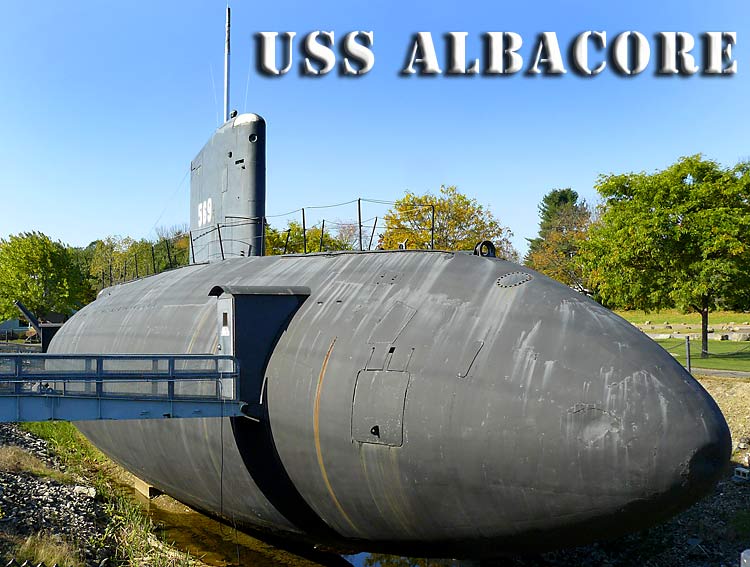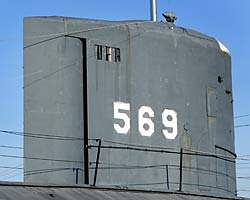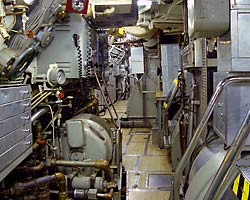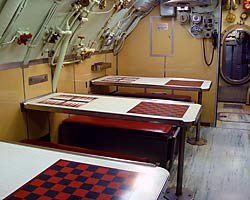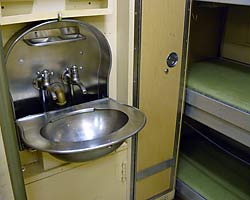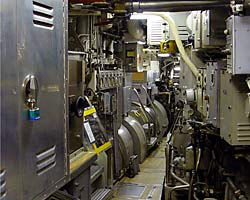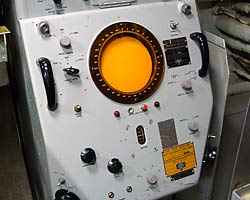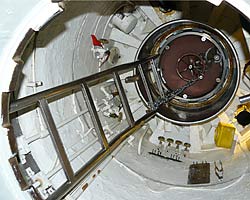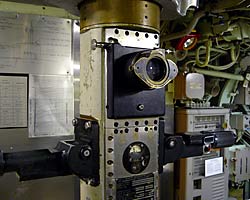 |
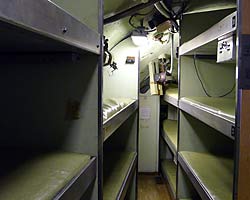 |
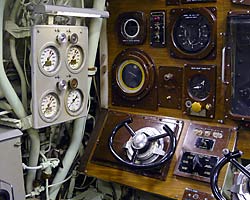 |
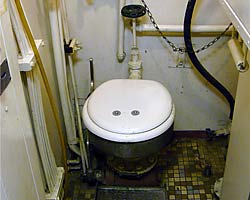 |
USS Albacore AGSS-569The USS Albacore is a the first fully streamlined submarine designed to operate primarily and best submerged. The Albacores's specifications are: Length: 204 feet You can visit the Submarine USS Albacore in Portsmouth, NH. The USS Albacore Museum museum consists of a visitor's center with a number of submarine related exhibits, an outdoor area with a memorial garden and alternate Albacore propellers, and the Submarine itself. The tours are self guided, with push button activated audio explanations and stories along the way. The submarine has come a long way since I first visited it in the early 1990s. The interior was rough and the sub did not have its propellers attached which seemed kind of disappointing. Today the propellers are back, and the interior has been restored to a very high standard. Interior compartments have been carefully cleaned and painted and the museum staff and volunteers have put a a great deal of effort into locating and replacing equipment that at some point before arriving at her resting point in Portsmouth had gone missing. The audio tour is excellent and provides good explanations of details, equipment and compartments along the way as well as having interesting commentary from former USS Albacore crewmen. The interior of any submarine is tight and the Albacore is no exception. When you enter the sub go to the forward most part of the Crews Quarters Forward and have a look at the tightest bunk on the sub. There isn't even enough room to sit up and there is an electric motor and an electrical panel hanging down from the inner hull to make life even more uncomfortable for the bunk's occupant. Every other submarine I've visited had a separate room for the captain. Not the Albacore. The CO or Commanding Officer's Stateroom has two bunks, one for the captain and one for another for the Executive Officer. The heads and showers are very confined, and since the fresh water distillation unit had a very limited capacity, the crew members were limited to one shower a week. By Friday it must have been one very ripe submarine! The Albacore was groundbreaking as it was the first submarine built to function best when submerged. The sub was an experimental test bed that led to the design and features of many of today's US submarines. Gone was the knife edged bow that was optimal for cutting through the waves on the surface. Gone too were the deck guns, platforms, and twin screw configurations all of which create additional drag while operating submerged. The sub has a narrow streamlined sail, with an experimental rudder at the rear to help keep the sub level when performing high speed turns (there are even subway strap hangar grab handles inside the sub to give crew members something to hold on to during high speed maneuvers). Another interesting feature were speed brakes located along the sides of the hull a few feet aft of the sail. They did the job, but created a lot of vibration when in use an tended to get sucked open during high speed runs. They were eventually welded shut. At least four different tail configurations, six different propellers, and a hull extension were all tried during the USS Albacore's career. Three different nose configurations were tried also. All this trial and error led to the fastest submarine in the world. The top speed is still classified, but one high speed run in 1966 got the submarine's hydrodynamicly clean hull up to 38.5kts (I'm reading that figure from the museum's website report of 35kts + 10%), or just over 44mph! Reading between the lines of an article written by former Albacore Captain James V. Ferrero who writes that the sub's speed record was captured by a Russian Alpha class submarine in 1977 at 44 knots, the actual top speed of the Albacore must have been between 35 and 43 knots (close to 50mph!). In trials where the sub was used as a target for anti submarine warfare maneuvers, it easily outran and outmaneuvered the destroyers and other escort vessels attempting to make attack runs on the Albacore. Interestingly I thought when I first visited the sub years ago that some of the helm instruments were covered over. The speed indicator repeater in the Wardroom had the numbers painted over (and still does). Today the helm instruments are uncovered and the speed indicator is graduated up to 40 knots. Unlike earlier WWII fleet submarines, the USS Albacore had its periscope located in the control room and not on a level above within the conning tower. The nice thing about this is as a visitor you can get a good look at the sub's periscope, and can use it to get a good peek at a periscope view of a bridge near Portsmouth Harbor. The Albacore's final tail configuration which you see today was also groundbreaking. The twin contra rotating propellers were unique, and ultimately not incorporated into today's US Naval submarine designs. The "X" tail configuration was also new, and only used on one other US submarine (the USS Jack). The remainder used traditional horizontal elevators and vertical rudders with a single multi bladed screw. One other feature of the Albacore to be incorporated into future submarines was the mounting of motors, engines, and other noise making machinery on rubber mounts to reduce radiated sound to a minimum. One feature that was not carried on into current designs was the lack of bow or sail diving planes. All US submarines have diving planes mounted on the sail to permit more control when diving or surfacing. Popular Science has an archive of an article from their December 1956 issue on the USS Albacore from when the submarine was first being tested. It has some interesting photos of the submarine underway including one with the upper hull painted white and the bow planes (which are not on the Albacore today) are in place and folded upwards. Once you get to the web page, search or scroll ahead to page 82 where the article begins. For even more information on the submarine's features and history visit the USS Albacore Museum Website. It is one of the best museum websites I've seen. It's clean, easy to navigate and has lots of descriptive photos and text. The copy and stories are very well written and do an excellent job of telling the story of the submarine's career, and the very interesting account of how the sub was towed near the museum site. Once it was near the shore, a coffer dam was built around it leading to a trench that led to the sub's eventual resting cradle. Once the coffer dam was completed the trench was flooded (with a bit of trial and error) and the sub was floated inland to where it rests today. In the museum is a gift shop with a moderate selection of items. Their coffee mugs and T-shirts have one of the best looking graphic designs I've seen from any museum I've visited. The staff were very friendly and accommodating and the fellow behind the counter has a very wry sense of humor. There's no food on site but it is a short drive from downtown Portsmouth with plenty of delis and restaurants. Parking is free and very close to the museum and submarine. Although there are ramps to get in and out of the submarine and no ladders, there are a few stair steps and several watertight doors to step through so the submarine itself is not handicap accessible. The museum is a short and easy drive from I-95 with signs showing the way from the highway. Check the USS Albacore museum's website for current hours. |
|
